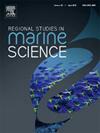How does the Natuna Cyclonic Eddy form in the Southern South China Sea, and what are its implications?
IF 2.1
4区 环境科学与生态学
Q3 ECOLOGY
引用次数: 0
Abstract
This study investigates the Natuna Cyclonic Eddy (NCE) in the South China Sea, focusing on its formation processes, circulation characteristics, and impact on essential oceanographic parameters such as sea surface temperature (SST), chlorophyll-a concentration (CHL), and sea level anomaly (SLA). Through an analysis of an extensive 11-year dataset derived from satellite observations and ocean models, we identify that the NCE is primarily formed through the interaction between the Vietnam Coastal Jet and the sea topography of the Natuna Islands region. With its cyclonic circulation reaching maximum speeds of 0.6 m/s, the NCE promotes the vertical transfer of nutrients from deeper layers to the surface, thus boosting biological productivity in the surrounding waters. Additionally, our results indicate that the variability of the NCE is notably influenced by both annual and semi-annual cycles, as well as the El Niño-Southern Oscillation (ENSO); specifically, La Niña events result in a more intense NCE compared to conditions during El Niño. These findings are vital for effectively managing fishery resources and conserving marine ecosystems within the area.
求助全文
约1分钟内获得全文
求助全文
来源期刊

Regional Studies in Marine Science
Agricultural and Biological Sciences-Ecology, Evolution, Behavior and Systematics
CiteScore
3.90
自引率
4.80%
发文量
336
审稿时长
69 days
期刊介绍:
REGIONAL STUDIES IN MARINE SCIENCE will publish scientifically sound papers on regional aspects of maritime and marine resources in estuaries, coastal zones, continental shelf, the seas and oceans.
 求助内容:
求助内容: 应助结果提醒方式:
应助结果提醒方式:


